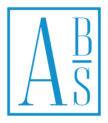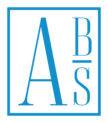Ever wonder where your money goes? Reconciling your bank statement is like detective work for your finances. It helps you uncover discrepancies, identify potential errors, and ensure your accounting records match the bank’s records. This might sound intimidating, but fear not! Here’s a breakdown of the 5 steps to reconcile your bank statement like a pro:
Step 1: Gather Your Supplies
Just like any good detective, you need your tools. Grab your latest bank statement (paper or online) and your business accounting records. These could be in a spreadsheet, accounting software, or a physical checkbook register.
Step 2: Verify Your Opening Balance
The opening balance on your bank statement should match the closing balance from your previous reconciliation. Double-check this number – it’s the foundation for everything else.
Step 3: Match the Transactions
Now comes the detective work! Go through each transaction on your bank statement, line by line. Look for corresponding entries in your accounting records. Here’s what to watch for:
- Deposits: Did you record all the deposits you made, including checks from clients and cash sales?
- Withdrawals: Did you record all the checks you wrote and ATM withdrawals made?
- Bank Fees: These will appear on your bank statement, but may not be reflected in your accounting records yet. Add them if necessary.
Step 4: Adjust Your Records
There will likely be some discrepancies. Here’s how to handle them:
- Outstanding Checks: These are checks you’ve written that haven’t cleared the bank yet. Subtract the amount from your accounting balance to match the bank’s available balance.
- Deposits in Transit: These are deposits you’ve made that haven’t shown up on the bank statement yet. Add the amount to your accounting balance to match the bank’s actual balance.
- Errors: Did you spot a typo or data entry mistake in your records? Fix it now to ensure accurate bookkeeping moving forward.
Step 5: Reconcile and Review
Once you’ve accounted for all the discrepancies, your adjusted accounting balance should match the ending balance on your bank statement. If they don’t match, carefully review your work and retrace your steps. Here are some additional tips:
- Use Checkmarks: As you match transactions, mark them in both your bank statement and accounting records. This helps avoid double-counting.
- Reconcile Regularly: Aim to reconcile your bank statement at least monthly. This helps catch errors early and keeps your finances organized.
- Automate (if possible): Many accounting software programs offer bank statement reconciliation features that can save time and streamline the process.
By following these steps, you’ll be well on your way to becoming a bank statement reconciliation pro. Remember, a reconciled bank statement provides peace of mind knowing your financial records are accurate and up-to-date. This clarity empowers you to make informed financial decisions for your business and achieve your financial goals.






